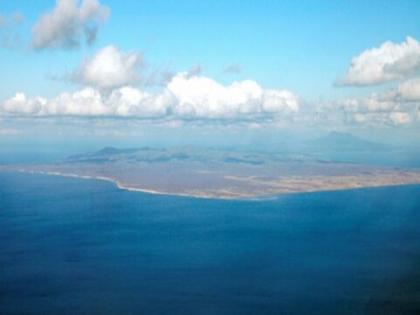Earthquake of magnitude 6.1 rocks Kuril Islands
By ANI | Updated: June 14, 2025 02:18 IST2025-06-14T02:10:07+5:302025-06-14T02:18:30+5:30
Kuril Islands, June 14 : An earthquake of magnitude 6.1 on the Richter Scale jolted Kuril Islands in the ...

Earthquake of magnitude 6.1 rocks Kuril Islands
Kuril Islands, June 14 : An earthquake of magnitude 6.1 on the Richter Scale jolted Kuril Islands in the Russian Far East, a statement by the National Center for Seismology (NCS) said.
As per the NCS, the earthquake occurred at a shallow depth of 10km, making it susceptible to aftershocks.
In a post on X, the NCS said, "EQ of M: 6.1, On: 14/06/2025 00:05:11 IST, Lat: 46.01 N, Long: 153.38 E, Depth: 10 Km, Location: Kuril Islands."
EQ of M: 6.1, On: 14/06/2025 00:05:11 IST, Lat: 46.01 N, Long: 153.38 E, Depth: 10 Km, Location: Kuril Islands.
For more information Download the BhooKamp App https://t.co/5gCOtjdtw0 @DrJitendraSingh @OfficeOfDrJS @Ravi_MoES @Dr_Mishra1966 @ndmaindia pic.twitter.com/gfO4Wk5JiJ
— National Center for Seismology (@NCS_Earthquake) June 13, 2025
Shallow earthquakes are generally more dangerous than deep earthquakes. This is because the seismic waves from shallow earthquakes have a shorter distance to travel to the surface, resulting in stronger ground shaking and potentially more damage to structures and greater casualties.
The Kuril-Kamchatka Arc is one of the most seismically active regions in the world. Deformation of the overriding North America plate and associated microplates generates shallow crustal earthquakes, while slip at the subduction zone interface between the Pacific and North America plates generates interplate earthquakes that extend from near the base of the trench to depths of 40 to 60 km.
The aftershock zones of great historic earthquakes abut one another along the strike of the arc but generally do not overlap; sections of the subduction zone have typically experienced earthquakes of a consistent size at fairly regular recurrence intervals, though the length of seismicity catalogs is typically shorter than the expected repeat times of the largest earthquakes known to have occurred in the region.
The Kuril-Kamchatka region frequently experiences large (M>=7) and great (M>=8) earthquakes. In the 114 years since 1900, 133 large and 12 great earthquakes have occurred along the arc. Damaging tsunamis followed several of the large interplate megathrust earthquakes.
While most large earthquakes along the Kuril-Kamchatka Arc occur at shallow or intermediate depths, the region also hosts large events that rupture at depths greater than 300 km. The most significant of these deep-focus earthquakes to date was the May 24, 2013 M 8.3 event beneath the Sea of Okhotsk, currently the largest deep-focus earthquake on record.
Disclaimer: This post has been auto-published from an agency feed without any modifications to the text and has not been reviewed by an editor
Open in app